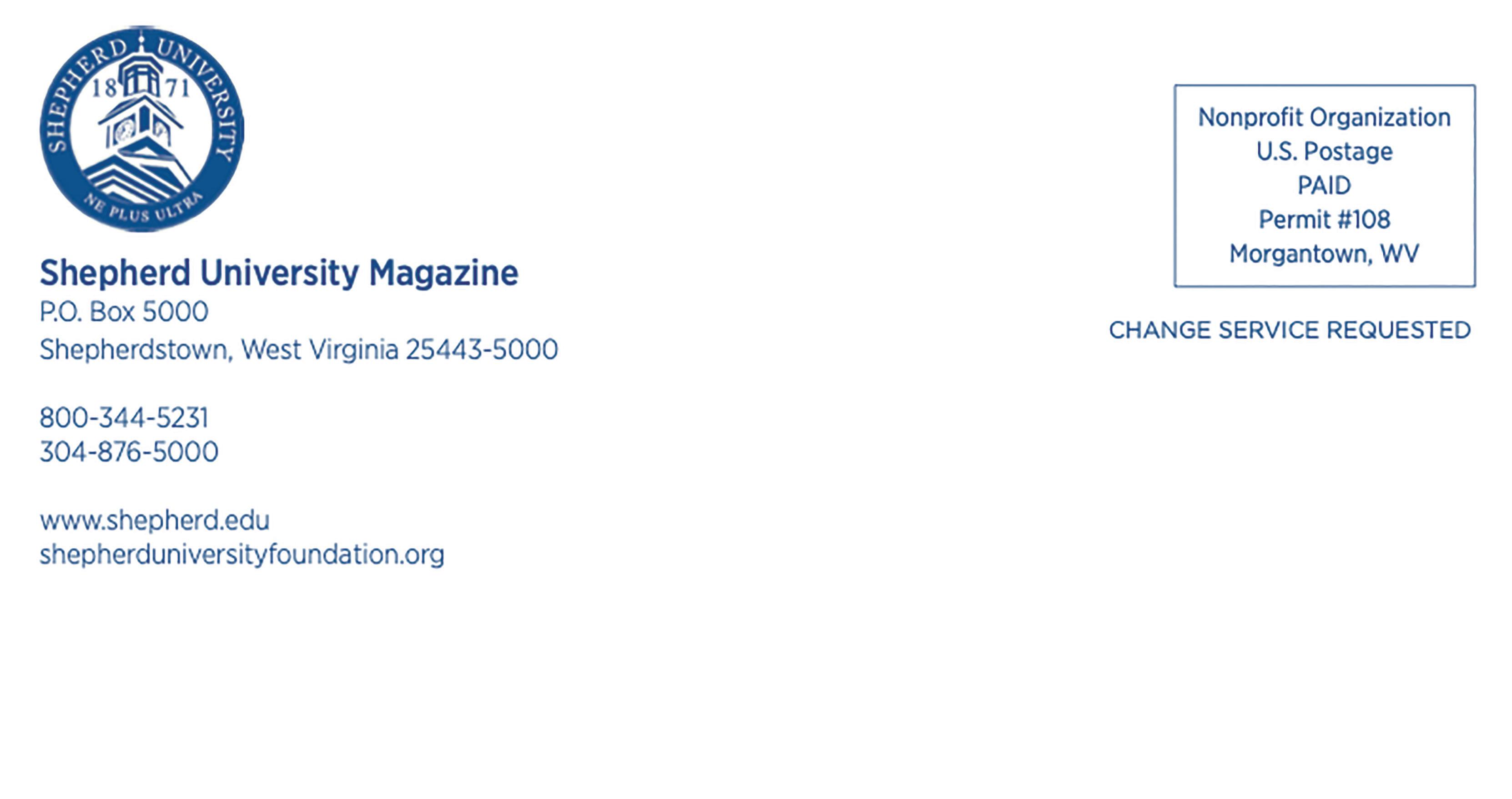Magazine




Due to COVID-19, Commencement for 2020 graduates had to be postponed. Those who earned degrees in 2020 and those who graduated in 2021 were able to participate in an in-person, socially distanced 148th Commencement on May 8, 2021, that included a Class of 2020 make-up graduate walk for bachelor’s, master’s, and doctoral recipients. Whether they graduated in 2020 or 2021, many students who participated were thankful for the opportunity to formally close out their college careers.
“It’s a long time coming. I’m glad we managed to end up doing it even though under these not ideal circumstances. But I’m happy that we got to do it.”
Jeffrey Weaver ’20, B.S. business administration, Smithsburg, Maryland

“I was extremely excited when we were able to come back and walk because I can finally close a chapter in my life.”
Toriyan Wallace ’21, B.S. health promotion exercise science comprehensive, Washington, D.C.

“To be able to come back and walk is really exciting for me because at first I thought we weren’t going to be able to walk at all and we weren’t going to be able to celebrate our accomplishments. As a first-generation student it was really important for me to be able to celebrate with my family.”
Aleigha Collins ‘20, B.S. business administration, Morgantown

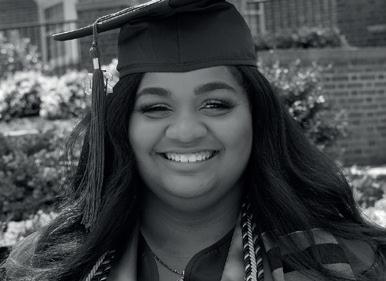
“The feeling that I feel is surreal. Being able to cross the stage and show the accomplishments to my family was the happiness for me.”
Daisy Bautista ’20, B.S. recreation and sport studies comprehensive studies, Riverdale, Maryland

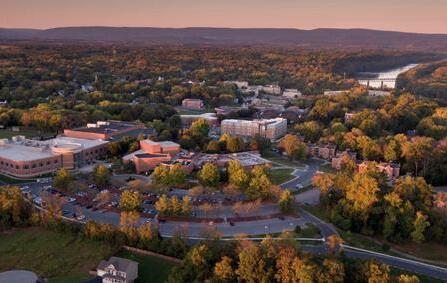


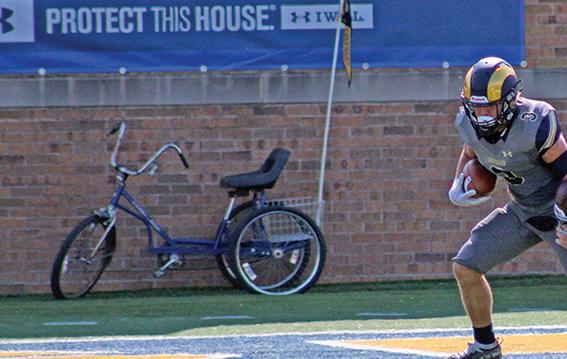

Eric J. Lewis ‘95 Chair Shepherdstown
Gat Caperton Vice Chair Berkeley Springs
Henry Kayes, Jr. Secretary Martinsburg
David Avella ‘92 Arlington, Virginia
James M. Cherry ‘96 Frederick, MD
Elana Gutmann Student Representative Morgantown
Mona Kissel Classified Employee Representative Martinsburg
Jonathan (Jay) Mason ‘08 Frederick, Maryland
Susan Mentzer-Blair ‘72 Knoxville, Maryland
Dr. Timothy K. Nixon Faculty Representative Shepherdstown
Karl Wolf ‘70 Shepherdstown, West Virginia
Shepherd University Foundation
Christopher S. Colbert ’95 President Shepherdstown
Ben Deuell, D.O. ’08 Vice President Martinsburg
Julia M. Connell ’84 Treasurer Winchester, VA
Karl L. Wolf ’70 Secretary Shepherdstown
Monica Lingenfelter Executive Vice President Hagerstown, MD
Arthur J. Auxer ’69 Shepherdstown
Jason Best, Ph.D. Shepherdstown
Kenneth J. Boone ’76 Sparrows Point, MD
Pat Moler Egle ’60 Shepherdstown
Tammy Gill, MBA ’18 Shepherdstown
Heidi M. Hanrahan, Ph.D. Shepherdstown
Mary J.C. Hendrix ’74 Shepherdstown
Darren B. Iden ’89 Winchester, VA
Brian K. Jackson ’87 Toluca Lake, CA
Robert H. Jensenius ’72 York, PA
Victoria M. Johnston ’90 Shepherdstown
Matthew P. Knott ’96 Harpers Ferry
Eric J. Lewis ’95 Shepherdstown
Cecelia Mason Martinsburg
Timothy B. McShea ’80 Frederick, MD
Mary Elizabeth “Liz” Oates Shepherdstown
J. David Rickard ’56 Greensboro, NC
Christopher K. Robertson ’89 Inwood
Mary Kathryn Robinson Winchester
Janine Sam, Ph. D. Shepherdstown
James S. Scott ‘88 Shepherdstown
W. Gregory Snellings ’91 Arlington, VA
Alfred L. (Al) Young ’89 Arlington, VA
Directors Emeriti Ramon A. Alvarez ’62 Charles Town
James A. Butcher, Ph. D. Shepherdstown
Kenneth E. Harbaugh Williamsport, MD
Jane Ikenberry-Dorrier, Ph. D. ’65 Scottsville, VA
Jerry P. Kerr ’68 Winchester, VA
Elizabeth S. Lowe ’52 Shepherdstown
Allen L. Lueck ’67 Shepherdstown
Susan Mentzer-Blair ’72 Knoxville, MD
David T. Newlin ’76 Winchester, VA
Michael A. Smith ’89 Middleburg, VA
Rich Goodman ’14 & ’17 Jefferson, MD
Dawn Hatzer ’78 Harpers Ferry
Shelby Maly ’17 & ’20 Emmitsburg, MD
Lyndsey Matschat ’06 Martinsburg
Rachel Moreno ’08 Harpers Ferry
Robin Moses ’88 Charles Town
Andrew Potts ’17 Martinsburg
James Scott Jr. ’70 Shepherdstown
Chris Thompson ’83 Winchester, VA
Cindy Vance ’88 Martinsburg
Directors Emeriti
Jim Auxer ’69 Shepherdstown
Scott Bradford-Doleman ’95 Inwood
Robert Fleenor ’74 Martinsburg
Paul “Soupy” Hillyard ’58 Winchester, VA
Lynn Leatherman ’92 Falling Waters
Kahlen Browning ’18 Williamsport, MD
Lynn Carr ’69 Mount Airy, MD
David Decker ’89 Martinsburg
Bassell Franks ’12 Martinsburg
Tripp Lowe ’95 & ’97 Shepherdstown
Francine Phillips ’82 Shepherdstown
Charles Van Metre ’56 Hagerstown, MD
Nelson Vazquez ’86 Fortson, GA
Chris Wooten ’87 Fallston, MD
Miller Hall was the first residence hall on Shepherd’s campus and was also the first building built on west campus.
It has been 150 years since Shepherd University (then known as Shepherd College) opened its doors in McMurran Hall in September 1871. Shepherd has been fortunate to have a community that believes in its mission, alumni and donors who support it, and students, faculty, and staff who work hard every day to make it a premier university.
The Shepherd University Magazine is published by Office of University Communications, Office of Alumni Affairs, and Shepherd University Foundation for the Shepherd University community –alumni, donors, current and prospective students, parents, faculty, staff, and friends of the university. A portion of the production cost is underwritten by the Shepherd University Foundation and Shepherd University Alumni Association.
Monica Lingenfelter

Managing Editor Kristin Alexander
Design
Shepherd has faced adversity over its century-and-a-half existence, ranging from lack of fiscal support from the state legislature, which drove its first president, Joseph McMurran, to resign in 1882, to declining enrollments during World War II, when the enrollment in 1941 was just 84 students. But the university has always found creative ways to move forward with its educational mission and commitment to excellence.
Shepherd’s resilience during adverse times in its history has served to make the institution and its people stronger. Employing problem-solving and creative approaches to issues that Shepherd has faced has created a university that is nimble enough to confront and implement change in order to meet challenges. Shepherd has faced two public health pandemics in 100 years—the H1N1 influenza in 1918 and COVID-19 in 2020—as well as enrollment downturns due to world events and changing demographics in the country. But the university has prevailed.
Eden Design: Jen Rolston ‘94 & Olivier Darbonville
Meg Peterson, Katie Gordon ‘12, Hannah Brumbaugh ’18 & ’20, Christine Meyer
Kristin Alexander, Meg Peterson, Katie Gordon ’12, Hannah Brumbaugh ’18 & ’20, Christine Meyer, Chip Ransom ’86, Cecelia Mason, Sylvia Shurbutt, Frances Marshall, Jody Brumage ‘13, Sam Levitan
The support of alumni, friends, the community, students, staff, and faculty has made Shepherd a leader in the region and state. And the Shepherd University Foundation, which is also celebrating a milestone (its 60th anniversary), and its donors have provided strong fiscal investment for student scholarships and academic program support, and, most recently, as a partner in the university’s public-private effort that led to the building of our newest residence hall, Potomac Place.
As a proud Shepherd alumna, I am honored to serve as the 16th president of my alma mater. We remain optimistically committed to training the next generation of leaders and model citizens. Happy 150th, Shepherd University!
Shepherd University opened its doors in McMurran Hall in September 1871, and on February 27, 1872, the West Virginia Legislature designated it as one of six state normal schools to provide teacher train ing. On July 1, 1930, Shepherd became a four-year teachers’ college and began grant ing Bachelor of Arts degrees. The college was authorized to implement liberal arts programs in 1943, and in 1950 the Bachelor of Science degree was added. In 2004, Shepherd became a university.

Shepherd celebrated its 125th anniversary in 1996 with a look back at notable achieve ments throughout its institutional history. As we now reach our sesquicentennial, we invite our Ram Family to once again step back in time as we examine new growth and innovations, visit old friends, and com memorate a campus enveloped in history. Come along as we honor Shepherd’s past while transforming its future.

In the 25 years since Shepherd University celebrated its last mile stone anniversary, great progress has continued to be made toward enhancing the campus and its aca demic mission.
Throughout its history, Shepherd has expanded and changed its degree offerings to meet the educational needs of its student body. Currently students may choose from seven undergraduate degrees, four gradu ate programs, and one doctoral degree.
In 2003 Shepherd be gan its first free-stand ing graduate program, a Master of Arts in curriculum and instruction. In 2015 the university’s first doctoral program launched, of fering a Doctor of Nursing Practice (D.N.P.), with the first class of nine students graduating in 2018.
A new College of Business began in 2017, followed by an academic re structuring in fall 2019. Along with the College of Business, the univer sity is comprised of a College of Arts, Humanities, and Social Sciences; College of Nursing, Education, and Health Sciences; and College of Science, Technology, Engineering, and Mathematics.
In 2002 the Robert C. Byrd Center for Congressional History and Education was established with a mission of promoting a better un derstanding of the United States

Congress and the Constitution. In 2019 a significant gift established the Bonnie and Bill Stubblefield Institute for Civil Political Communications at Shepherd, which is dedicated to addressing the role communications play in the nation’s political culture.
Shepherd’s campus has expanded, changed, and modernized with over $125 million in improvements in the past 25 years. These projects included the addition of three new residence halls, several academic buildings, the Center for Contemporary Arts Phases I and II, Wellness Center, and a pedestrian under pass. The Martinsburg Center opened its doors in 2013 and five years later the Shepherd University Agricultural Innovation Center at Tabler Farm was estab lished, offering hands-on experience in sustainable agriculture to students and veterans.

RAM FACT
Since 1987, seven Shepherd University professors have been named Professor of the Year by the Faculty Merit Foundation of West Virginia.*

The university has continued its tradition of athletic excellence as well. The 2000 football sea son opened in a newly renovated Ram Stadium and in 2003 the Kenneth C. Boone Field House was dedicated. The
2015 football team participated in Shepherd’s first-ever national cham pionship game, losing a hard-fought battle to Northwest Missouri State 34-7. Shepherd joined the Pennsylvania State Athletic Conference (PSAC) beginning with the 2019-2020 academic year. Women’s lacrosse began in 2014, women’s golf was added in 2020, and men’s and women’s cross country made a return to the athletic roster in the 2020-2021 school year.
The tradition of naming the Shepherd ram after the university’s sitting president has also continued. The mascot under President David Dunlop was Livingston, while Zan de buted under President Suzanne Shipley. J.C., a Dorset ram whose name is based on the middle initials of President Mary J.C. Hendrix ’74, was introduced to the campus in June 2017. As with past Shepherd mascots, J.C. enjoys at tending football games and posing for selfies at campus events.
To learn more about Shepherd’s rich history, visit www.shepherd.edu/ chronology.
*[They are Dr. Jeff Groff, Department of Environmental and Physical Sciences, 2019; Dr. Heidi Hanrahan, Department of English and Modern Languages, 2018; Sonya Evanisko, Department of Contemporary Art and Theater, 2015; Dr. Edward M. Snyder, Department of Environmental and Physical Sciences, 2010; Dr. Sylvia Bailey Shurbutt, Department of English and Modern Languages, 2006; Dr. Linda Tate, Department of English and Modern Languages, 2003; and Margaret E. T. Bryer, Department of English and Modern Languages, 1987.]

Like any living, breathing thing, Shepherd University has grown and evolved over time. The campus has spread westward, acquiring acreage, razing old buildings, and erecting new ones in their place. Yet throughout its 150-year history, one structure has stood the test of time. Presiding over German Street from its prestigious location on a lot that once served as the home-site of Shepherdstown founder Thomas Shepherd, McMurran Hall offers a consistent reminder of the university’s institutional origins.
Shepherd’s oldest building is steeped in both history and nostalgia. In modern times, its im posing porch has served as the backdrop for marriage proposals, engagement and commence ment photos, and musical performances (both planned and impromptu), while campus and community events are often held on its lush lawn. Meanwhile, its inner dwellings host university offices, an annual visit from Santa Claus – who greets local children in the stately Shepherd Room – and at least one rumored ghost.

McMurran Hall is bordered on two sides by a wall of hand cut stones. While construction began in 1859, the “College Wall” remained incomplete until after the Civil War. Generations of Shepherd students have congregated along the wall to socialize and observe passersby despite an 1896 town ordinance imposing a $1 fine for loafing near the wall.
Historically, the building has served as a town hall, county courthouse, and allegedly as a hospi tal during the Civil War – although local historian Dr. John E. Stealey, III, a trustee of McMurran Hall, is quick to point out that no conclusive evidence of this exists.
“Oral tradition, we call it in history,” said Dr. Stealey, a Shepherd distinguished professor emeritus of history. “It’s dependable sometimes, but you have to be careful.”
Nevertheless, from historic milestones to modern-day memories and all the lore that lies in between, suffice it to say, McMurran Hall has seen it all.
For 150 years, the Old College Building has stood as a symbol of institutional excellence.RAM FACT
McMurran Hall was built in 1859 by Thomas Shepherd’s grandson, Rezin D. Shepherd, who intended it to be used as a town hall. Rezin Shepherd had grown wealthy as a businessman in New Orleans following the Louisiana Purchase in 1803, and upon returning to the area in 1841 became a major benefactor to the town of Mecklenburg.
Having been born and raised in the stone house constructed by his grandfather on “Lot 36” on the northeast corner of German and King Streets, Rezin Shepherd inherited the property following the death of his father, Abraham Shepherd. The original stone structure – once used as a fort during the French and Indian War – was torn down in 1812; the Thomas Shepherd Grist Mill continued to operate on the property until 1856, when it too was razed. The lot then sat vacant for three years until the first cornerstone of what is now known as McMurran Hall was laid on October 6, 1859.
Following the Civil War, Mecklenburg became known as Shepherdstown and was named the official seat of Jefferson County. Before his death in 1866, Rezin Shepherd made provisions to have two wings add ed to his town hall for use as the county courthouse. However, the county seat re turned to Charles Town in 1870 and the newly-expanded building sat vacant until the Town Council voted to repurpose it as a new college for teachers. Thus, in 1871 the building was designated the “Shepherd Teachers School” and Shepherd University was born.
“I always tell my students that Shepherd University started as an adaptive use project for historic preservation,” said Dr. Keith Alexander, associate professor of history at Shepherd.
As the Shepherd Teachers School evolved into Shepherd College and, later, Shepherd University, McMurran Hall became known as the Old College Building. It did not de rive its current moniker until 1927, when

Legend tells of an old man who haunts the clock tower of McMurran Hall. He can allegedly be seen peering out through the shutters late at night.
it was named in honor of Shepherd’s first president, Joseph P. McMurran. In the years since, it has been used as an academic building for classes in biology, journalism, music, and public speaking, and at one point served as the Office of Admissions. Today it houses the offices of the Shepherd University Foundation and Alumni Affairs.
“I use McMurran Hall as a prime example of Greek Revival architecture in my historic preservation classes,” said Dr. Alexander, who includes architectural history as part of his curriculum. “It’s about as fancy a Greek Revival style as you’re going to find anywhere.”
McMurran Hall as an architectural struc ture, he notes, is a tribute to the Choragic Monument of Lysicrates, a monument built in Athens in 334 B.C.E. by the wealthy pa tron of a Greek chorus. When his pupils took first prize in a choral competition, Lysicrates erected a monument to celebrate their triumph; its influence has since been adapted and replicated in numerous exam ples of the Greek Revival style.
“The clock tower on top of McMurran is essentially an outdoor advertisement – a billboard promoting excellence in aca demic achievement and civic engagement,” continued Dr. Alexander. “It fits well with Shepherd’s tradition of producing excel lence in leadership.”
McMurran Hall’s clock tower is as distin guishable to Shepherdstown as Shepherd University itself. But the iconic structure – and possibly even McMurran Hall – may never have existed if not for a dispute over the clock it houses.
Upon his return from New Orleans in 1841, Rezin Shepherd used his newfound wealth to financially support the restoration of the old Trinity Episcopal Church. The renova tion included the addition of a clock tower

“The clock tower on top of McMurran is essentially an outdoor advertisement – a billboard promoting excellence in academic achievement and civic engagement.”
for which Shepherd ordered a clock from Bostonian clockmaker A.L. Dennison. But when his generous donation was rebuffed by the church vestry, Shepherd instead of fered the clock to the Town Council, which enthusiastically accepted. A messy dispute followed over who legally owned the clock, with the town ultimately prevailing.
When the church moved to its current lo cation on the corner of Church and German Streets in 1859, Shepherd proposed a new town hall be erected at the site of his for mer family home, complete with a tower to house the clock he had commissioned 18 years earlier.
McMurran Hall trustee Dr. John Stealey neatly summarized the entire ordeal, say
the structure’s creator, Jacob Sheetz, re corded his name upon completion. Daniel Tokar added his signature during the tow er’s 1992 restoration and has transcribed every other name recorded as well – all of which may be found on Shepherd’s ses quicentennial celebration website at www. shepherd.edu/150th.
At 179 years old, the clock itself is still ticking, despite taking more than a few lick ings. After running faithfully for a century, it began to show signs of wear and tear by the mid-1940s, thanks to the ravages of time and countless meddlesome pigeons. Suffering frequent breakdowns, it ran inter mittently for the next three decades until a 1976 campaign was organized to save it.
that any income generated be used for the benefit of the property; and lastly, that surviving trustees neither sell nor convey the historic landmark to an outside party.
Shepherd continues to lease the building, as it has since 1871, and assumes responsi bility for its maintenance and upkeep. And if that were to somehow cease?
“Well, then we’d have a problem,” laughs Dr. Stealey. “But it has to be used for the good of the town!”
The original trustees of McMurran Hall included Henry Shepherd, John H. Zittle, and George H. Beltzhoover, Sr., one of the founders of Shepherd College. In a long-held tradition, trustees appoint their successors.
McMurran Hall served as Shepherdstown High School from 1922 until 1928.
ing, “The original part of the building was essentially built to hold the clock for the new town hall.”
The McMurran Hall clock tower under went two renovations in the 1990s – first in 1992 and again later in the decade. Black smith Daniel Tokar of The Willow Forge in Shepherdstown recalls the earlier res toration, when he and his team made a fascinating discovery while refurbishing the tower’s weathervane.

“We discovered the names of the three original craftsmen,” he said. “They were etched under the remains of the original gilding on the weathervane’s copper ball.”
Throughout the decades, visitors to the McMurran Hall clock tower have indelibly marked the occasion by writing their names on its walls – a tradition that began when
The clock is now maintained by Shepherd University facilities staff, who faithfully wind it once a week.
Following Rezin Shepherd’s death in 1866, proprietorship of his estate fell to his near est relations, who leased the former town hall to the newly formed Shepherd Teachers School. However, a legally binding deed created in 1891 conveyed ownership of the building to three designated trustees.
For 130 years McMurran Hall trustees have adhered to this deed and the three provisions outlined within: first, that the building be utilized for the benefit of Shep herdstown and its community; secondly,
“It’s a self-perpetuating board,” said Dr. Stealey, who was appointed in 2017 by fel low trustee William E. “Bill” Knode, III ’58, with whom he shares a close friendship. It’s a role Dr. Stealey assumes with honor and reverence.
“I’m a historian, so I feel it’s a com munity contribution,” he said. “It’s all part of giving back for the benefit of the community.”
The trusteeship of McMurran Hall is a time-honored tradition, venerated as much for its loyalty as its longevity, and Shepherd University is proud to be a part of the community it serves. For 150 years the Old College Building has stood as a symbol of institutional excel lence. May it be so for at least that many more.
“of the family created on campus. I could not imagine my undergrad experience at any other institution and am so excited to see what is next at Shepherd. Once a Ram, Always a Ram!”
–DEVIN SPINKS ’19
“of the close relationship I had with my professors. My professor helped me two years after I graduated when I needed a letter of recommendation for grad school. My professor even asked me to let him know if I got in; I did! It’s nice to have professors who are invested in your success even after you leave.”
-JENNIFER REID ’18
“I am surrounded with a community of amazing people that help me find purpose. Shepherd is home!”
-AYOMIDE ADEGBAMIGBE ’17 & ’19
“it gave me a community. I had amazing RAs who helped me come out of my shell. My classmates challenged me to have an open mind and my professors were there for guidance on and off campus. My experience at Shepherd made me the Ram I am today.”
-ELIZABETH CAMP ’18“no matter how many boardrooms I’ve sat in, no matter how many ‘heads of state’ or ‘business barons’ I’ve met, I know that it all started from my great education at Shepherd.”
-J.J. SORRENTI ’88
“I am gratified by the interaction of the institution with the local community in both academic opportunities and cultural events.”
-NICK KERCHEVAL ’74

uth Cornelius Orndorff ’59 began her Shepherd education in 1943 but would not complete her degree for another 16 years. She first left Shepherd in 1944 to join the Curtiss-Wright Cadettes, an aeronautical engineering training and employment program for women during World War II. As one of 918 female college students across the nation selected for the government-sponsored program, Ruth graduated from an intensive training program at Purdue University and reported to a Columbus, Ohio aircraft plant where she worked in the wing design unit.
Orndorff returned to Shepherd following the war and subsequent deactivation of the CurtissWright Cadette program, but marriage and family delayed her studies for a second time. Returning once again, she graduated in 1959, earning a degree in English with a concentration in social studies. She went on to teach world history and government for 28 years. At 96 years young, Ruth has visited all seven continents, going on safari in Africa, riding elephants in Asia, and hobnobbing with penguins in Antarctica.
Myles Humphrey ’18 served as captain of Shepherd University’s nationally ranked football team and has played professional football for the Baltimore Ravens, New York Giants, and Washington Football Team. He was also selected as a second-team NCAA Academic All-American in football. During his time at Shepherd, Humphrey was a Foundation scholar and served as a student caller for Shepherd’s annual Phonathon fundrais er. He graduated with a degree in Recreation and Sports Studies and continues to pursue a career with the NFL, supported by his wife, Shepherd alumna Kathlene Striano Humphrey ’17.
Ruth Orndorff and Myles Humphrey truly embody Shepherd’s sesquicentennial theme to honor the past and transform the future!



DEPARTURE DATE: SEPTEMBER 13, 2021
Visit https://gateway.gocollette.com/link/1046748 to sign up for the trip and request more information.
The Shepherd University Alumni Association wants to recognize and promote our alumni-owned businesses. All alumni-owned businesses who register their business receive a window decal and promotion on social media and the alumni association webpages. Contact Hannah Brumbaugh at hbrumbau@shepherd.edu with your name, class year, business name, and business address.
Since Shepherd celebrated its 125th anniversary in 1996, the university has undergone 13 campus improvement projects totaling more than $125 million, including the construction, addition, or renovation of the following:
DEPARTURE DATE: MAY 15, 2022
For more information regarding Sunny Portugal visit https://gateway.gocollette.com/link/1046753
Or attend one of our information sessions: September 15, 2021: In-person info session for Portugal 6:00p.m. September 21, 2021: Webinar info session for Portugal 6:00p.m.

https://www.shepherd.edu/suaa/roaming-ramsalumni-travel-program
• Dunlop, Printz, and Potomac
Place residence halls
• Robert C. Byrd Science and Technology Center
• Erma Ora Byrd Hall
• Center for Contemporary Arts Phase I and Phase II
• Scarborough Library renovation
• Ram Stadium renovation
• Kenneth C. Boone Field House
• Wellness Center
• Pedestrian underpass
• Martinsburg Center
• Agricultural Innovation Center at Tabler Farm
During its 150 years of existence, Shepherd University appointed 16 people to its most prominent post of chief executive officer. These leaders have seen the University through times of war, peace, booms, recessions, and defining historic events. Throughout it all, they have made their mark in very remarkable, but distinctive, ways.

A common bond shared by most of Shepherd’s presidents is their lasting legacy established through the creation of named endowments. Administered through the Shepherd University Foundation, these funds have cemented the values and ideals of these notable figures in perpetuity.
To commemorate Shepherd’s sesquicentennial anniversary, the Foundation asked the university’s living presidents and family members to share what they feel is their legacy and how they believe creating privately funded scholarship, program, and faculty excellence awards benefit the University.

rguably our father’s leg acy during his 21 years as president [of Shepherd College] was to lay a founda tion on which the transforma tion and progress of the last 50 years would unfold. The faculty grew in strength, the curriculum was enriched, and the campus footprint itself expanded - most notably with the acquisition of 125 acres of land, including what is now the president’s business residence, Popodicon. That growth in quality and capac ity has contributed to and sustained Shepherd’s progress over the last half century.
Endowments and other forms of support to colleges and universities from alumni and friends are indispensable
to quality and sustainability of all higher education in America, public as well as private. Our family created the Dr. Oliver Ikenberry Memorial Scholarship for one male and one female outstanding grad uate student to be awarded each year in recognition of ex emplary achievement. We also created a fund in honor of our mother, Margaret Ikenberry, who spent her years at Shep herd working as an unpaid volunteer to serve Shepherd students and faculty members. Giving back, whether through strengthening an endowment, leaving a legacy, or living a life that in some small way contributes to a greater good, is a goal to which all of us can aspire.”
“ADr. Oliver S. Ikenberry (1947-1968) Dr. Stanley O. Ikenberry ’56, Dr. Jane Ikenberry Dorrier ’65, and Mrs. Margaret Ikenberry Wade ’58, children of President Oliver Ikenberry The Ikenberry family has established three named funds over the years: the Dr. Oliver Ikenberry Memorial Scholarship, the Margaret Ikenberry Fund for Popodicon House and Garden, and the Stanley O. Ikenberry President’s Discretionary Endowment. Photo credit: A. Aubrey Bodine, world-renowned photojournalist who worked at the Baltimore Sun from 1920-1970.
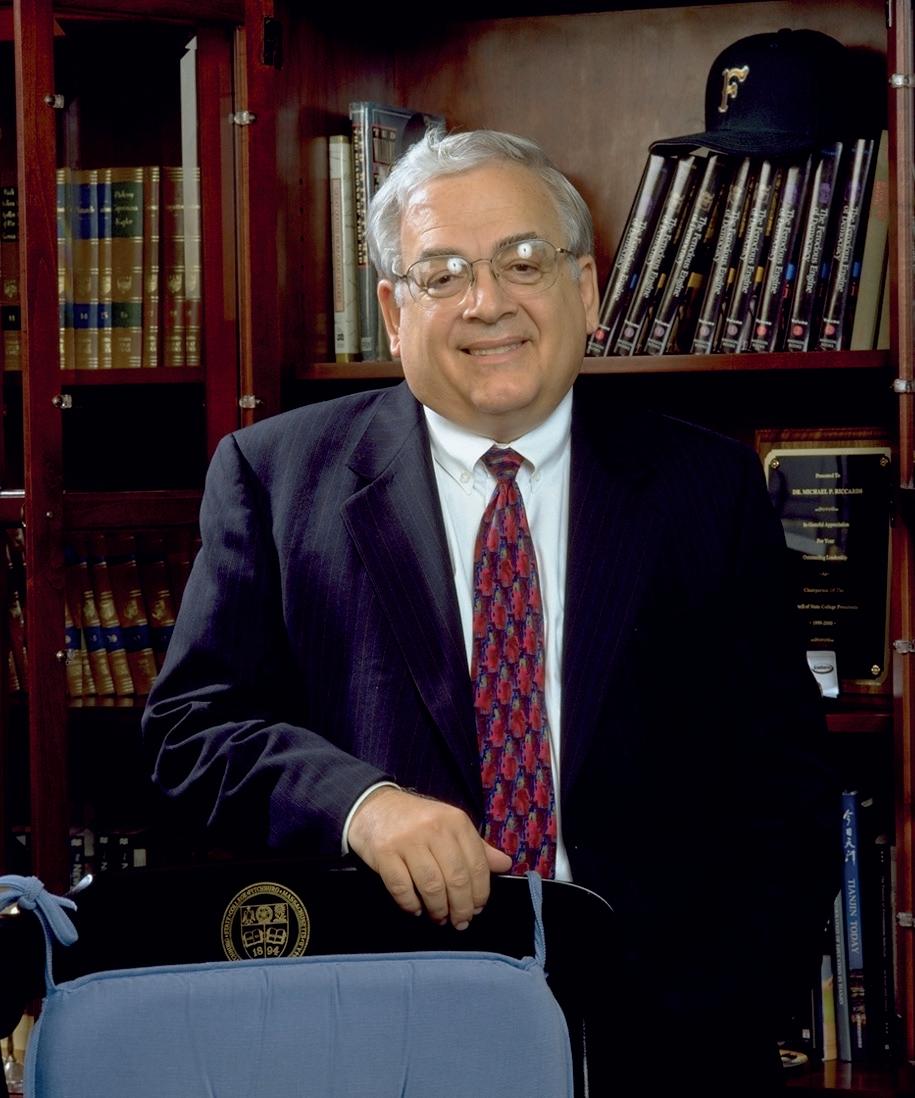
greatest accomplish ment was to integrate the institution more fully - the student body, the faculty, and even the police force. I’m proud of the buildings that went up, including the big wing of the science building and the ground work for CATF, which was created during my presidency.
I think that Shepherd has never really had a rich budget from the state of West Virginia, even com pared with other schools in the
state. It is important to focus on scholarship monies so that kids can attend who might not otherwise be able. And, as such, the Michael P. and Barbara Riccards Minority Student Scholarship is a direct reflection of my values and priorities.
As Shepherd celebrates its 150th, I wish future students the best, and that public education works for them the way it did for me.”
Dr. Michael P. Riccards
Dr. David L. Dunlop (1996-2007)

“During the 11 years that I was privileged to be Shepherd’s president, the institution matured from a college to a university. Highly qualified faculty and staff were recruited, new programs were developed, accreditations were ap proved, the endowment increased, several significant buildings and additions were constructed, the budget was balanced, and the stu dent body grew both qualitatively and quantitatively.
The lifeblood of any campus is its student body, and it is the stu dent body in conjunction with the faculty that defines the character of the university. It follows that the recruitment of the best available students is paramount in order for Shepherd to maintain its high qual ity reputation. Enter the endowed scholarships. These scholarships provide the admissions office with one of the most essential means necessary to attract those students. In so doing, we can all continue to be proud of our institution, Shepherd University.”
The David Dunlop Scholarship, created in 1997, is a general academic award for honor students. The Catherine Dunlop Scholarship, created in 2003 by Dr. Dunlop (bottom left) in honor of his wife, Cathy, is designated for students majoring in elementary education.
Photo credit: Shepherd University Communications
DR. DAVID L. DUNLOPRAM FACT
Shepherd carries on a long-standing tradition of naming its live mascot after the sitting president. The Shepherd ram during President Dunlop’s tenure was named ‘Livingston’ after David Livingston Dunlop.
“MyThe Michael P. and Barbara Riccards Minority Student Scholarship was created in 1994 to honor Dr. Riccards’ emphasis on diversity and inclusion at Shepherd. Photo courtesy of Fitchburg State University
The lifeblood of any campus is its student body, and it is the student body, in conjunction with the faculty, that defines the character of the university.

“When we look back as university leaders, it may not be the most dramatic or hard-fought accomplishment that comes to mind as our legacy, but the most symbolic of the campus we served. Emblematic of my leadership of Shepherd University is the creation of the underpass that joined the two campuses in a safe and attractive way. It means a lot to me that something that could visibly unify the community and extend Shepherd’s mission as a public liberal arts university was not only imagined and made possi ble during my presidency, but will now exist to fill whatever roles are needed in the future.
We give back to what feeds us, whether it is our work life, our family life, our faith. In giving to Shepherd I was always cogni zant of the wonderful gift Dr. James Moler gave to endow Ram Football and the gift from Dr. Stanley and Mrs. Judy Ikenberry to create a president discretionary fund. Just as my leadership benefitted from their gifts, Randy and I created an endow ment to serve the leadership of Shepherd and its students through international study and research. This fund is a symbol of our gratitude for selecting me as its 15th president, resulting in amazing mem ories and bringing unparalleled meaning to our lives.”
Dr. Suzanne Shipley (seated) and her husband, Randy Wadsworth, endowed the Create the Future fund in 2007 to support international study and research. Additionally, the Shipley family endowed two other scholarship awards: the Walker Horton Shipley Music Scholarship in 2010 and the Mary Jane Shipley Scholarship in 2014, the latter created by Suzanne and her brother, Wesley, to honor their mother for her 90th birthday. It is designated in support of women’s athletics.
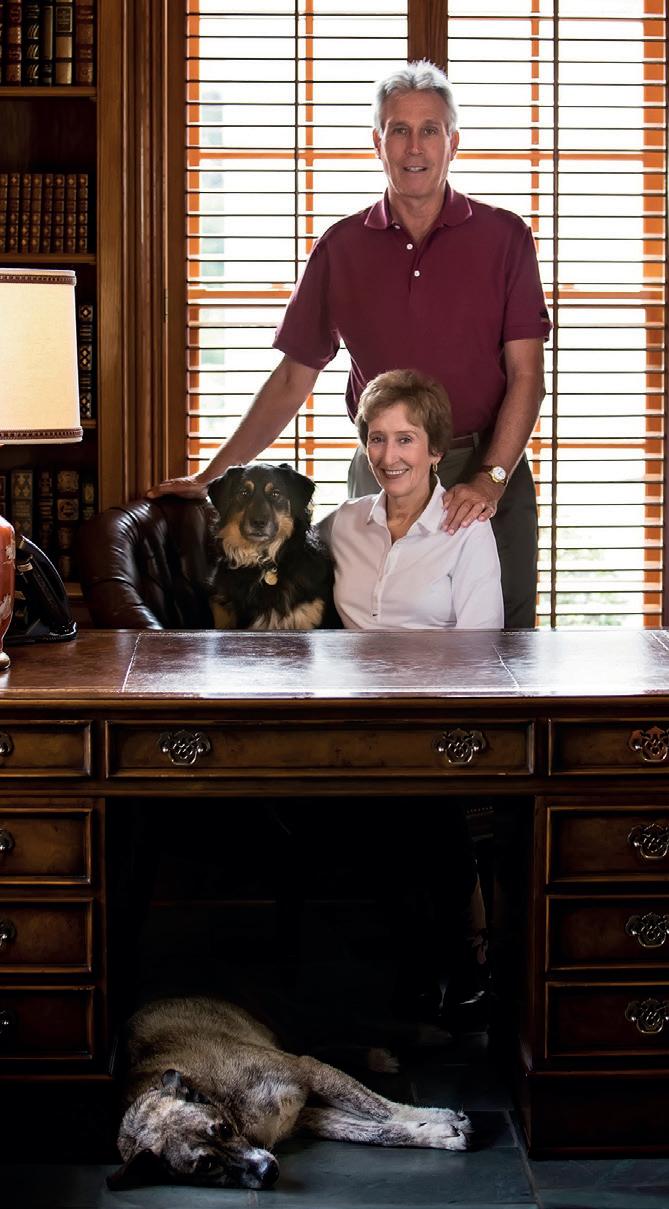
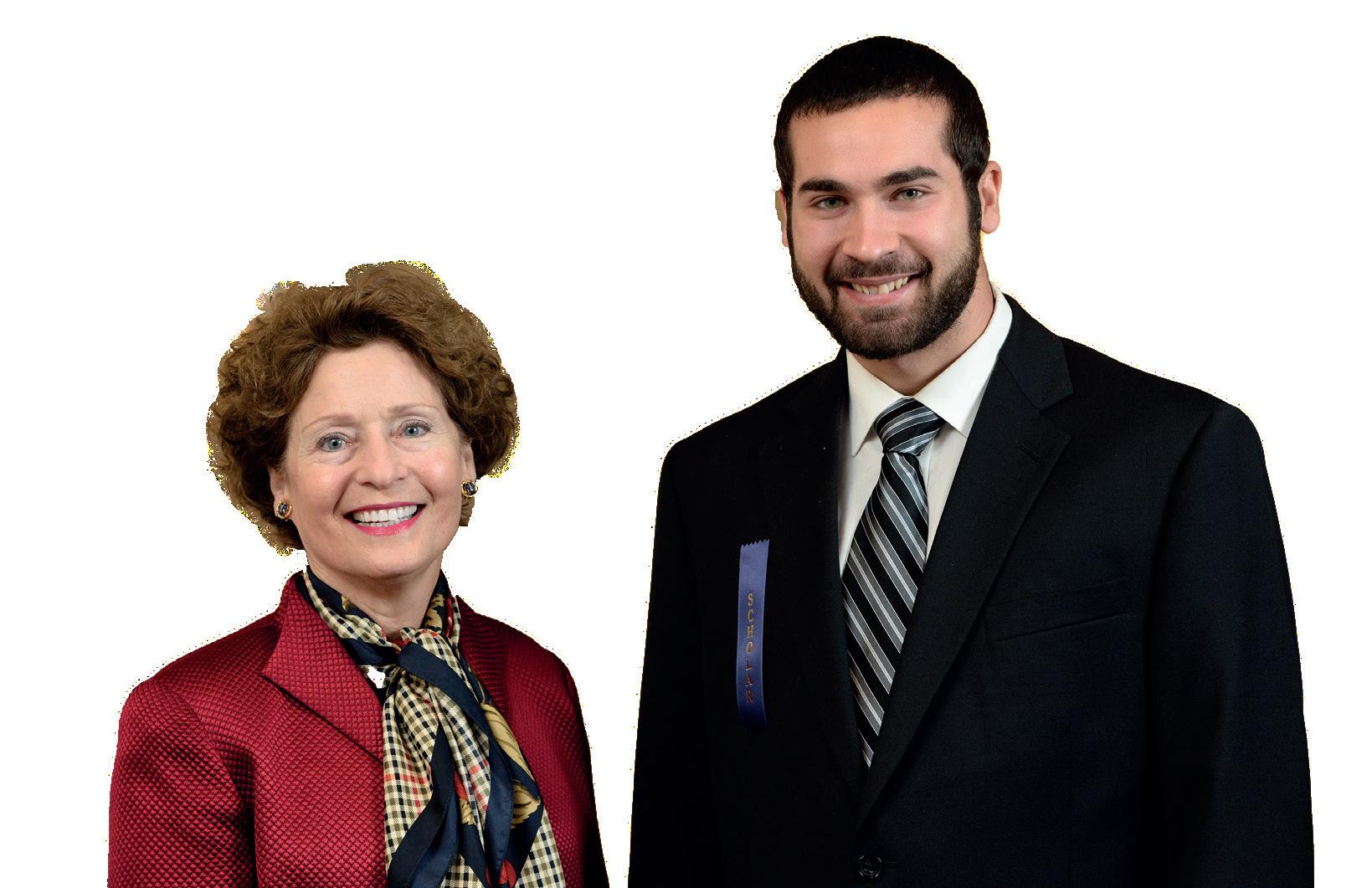
Photo courtesy of Midwestern State University
“Iam most proud of being the first alumna to serve as president of my beloved alma mater- and to have the opportunity to introduce the theme of excellence-innovation-opportunity to guide the training of the next generation of model citizens. Working with dedicated administrators and faculty leaders, we have introduced new academic programs, hired excellent faculty and staff, remod eled our campus, established an Agricul tural Innovation Center - all of which
Dr. Hendrix met with Daniel Testa, the Captain Charles N.G. and Jessie S. Hendrix Memorial Scholarship recipient, during the 2017 President’s Reception for Donors and Scholars. This scholarship was created in 1978 in support of pre-medicine students or related fields of research. In 1989, the Hendrix family also established the Jessie and Mary Hendrix Memorial Scholarship, designated as a general academic award. Mrs. Jessie Hendrix was a longtime officer and member of the Shepherd University Foundation Board of Directors.
have collectively transformed Shepherd University into a noteworthy institution offering a quality liberal arts education that prepares our graduates for a global marketplace.
Endowments are critical to support the academic mission of the University. They serve as a major source of funding for our students, who would not be able to afford a college education without this vital financial support. My parents and I have established two family named funds
for deserving students, and it has been a special privilege to witness the success of these recipients. Upon returning to Shepherd to serve as president, my hus band and I were delighted to establish the Shepherd Success Fund - to help support campus projects advancing the educa tional experience and mission. Shepherd students succeed, and our wonderful Foundation is committed to helping them realize their dreams.”
’16 Danielle Fuhrmann re-opened the classic Rock Hill Creamery in downtown Shepherdstown! She is offering up traditional flavors, like Battering Ram and Ram Tracks, and new flavors - including dairy-free options. Danielle is “thrilled to keep it going!”

’17 Tyler Kambis is a current graduate research assistant at the University of Nebraska Medical Center in the Department of Genetics, Cell Biology and Anatomy and a PhD candidate in the lab of Paras Mishra.

’74 Nicholas ‘Nick’ Kercheval is owner and proprietor of Summit Farms in Harpers Ferry. He is also heavily involved within the local community, and serves as chair of the Eastern Region Soybean Board.
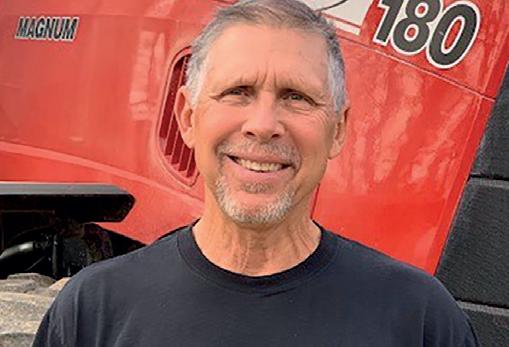
To read more Shepherd alumni stories, scan this QR code to visit our webpage at https://www. shepherd.edu/suaa/alumnihighlights

Shepherd has active regional alumni groups in the Eastern Shore/Delaware and Southwest Florida areas, with more groups forming. Reach out to the ambassador nearest you to join or become an ambassador in your area. Visit https://www. shepherd.edu/suaa/regional-communities for more information and photo galleries. Contact Hannah Brumbaugh with interest or questions at hbrumbau@shepherd.edu or call 304-876-5157.
’17 Neal Crosson lived in Spain for three years after graduating from Shepherd with his Bachelor of Arts in Spanish. In 2019, he received his Master of Arts in bilingual and multicultural education from the University of Alcalá de Henares in Madrid. He returned to the U.S. last summer and has been a program instructor at Pacific Discovery in Hawaii for the past year.
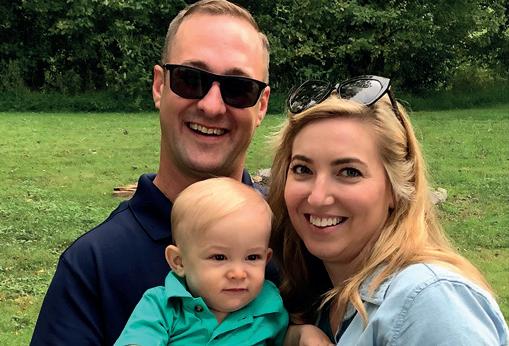
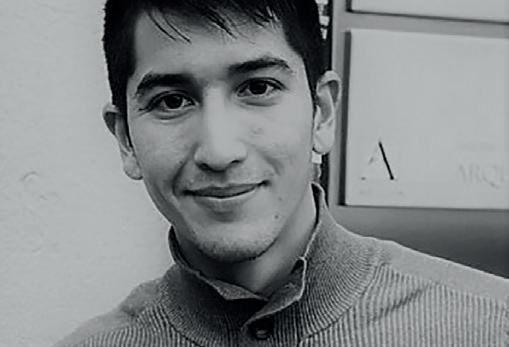
’07 & ’14—Megan ’07 and Gerren ’14 Simms own Simms Health, where clients are provided extraordinary therapeutic services. Simms Health offers mental health counseling to all ages and for any mental healthrelated issues.
’17 Mike Reed, 2013-2017 men’s basketball team member, is a division manager for Waffle House. He learned about careers within Waffle House at the Shepherd Career Fair in the Wellness Center.

Nasser Muhammed is the founder of Lifting as We Climb, LLC. The business provides educational services to schools with a vision to build an arena of equal access and equity in education regardless of race, gender, or socioeconomic background.

’19 and ’21—Alyssa Roush accepted a position as the student activities coordinator at Hastings College in Hastings, Nebraska. She started her new position in July 2021.


’12 Emily Cole is owner and founder of Cole Creative LLC., and works with fellow alumnus Nasser Muhammad as the chief development officer of Nasser’s business, Lifting as We Climb.
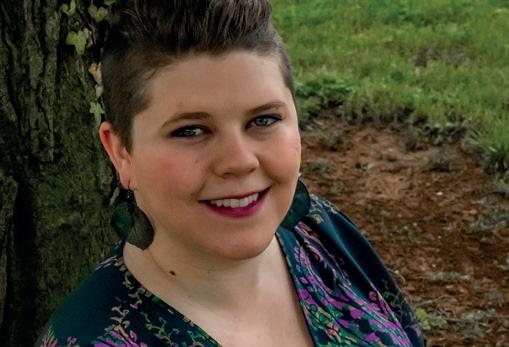
’88 J.J. Sorrenti is a franchising and retail expert, who has led multiple companies to awardwinning results over the past 25 years. Most recently, J.J. has been president of Safeguard Business Systems and CEO and member of the Board of Directors for the 325-unit chain Hollywood Tans.
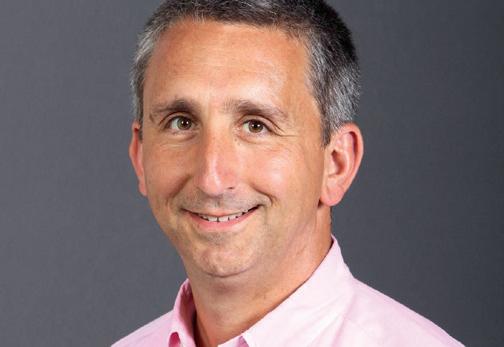
’15 Elizabeth Ricketts was elected to the Charles Town City Council this past May. She will be the youngest council member. Ricketts recently completed a year of service with Americorps and hopes to use the training she received in community engagement to serve her city. She considers the West Virginia studies course at Shepherd University as the beginning of her interest in local politics. Ricketts graduated from the RBA program at Shepherd in 2015.
Do you want to share your knowledge, life skills, or talents with the Ram Family Alumni Network? Sign up to be a part of our Career and Life Video Series!
Reach out to Hannah Brumbaugh, hbrumbau@ shepherd.edu or call 304-876-5157 to volunteer.
To view previous videos, sign-up online, or review the FAQ visit https://www.shepherd.edu/suaa/ careerlife-video-series

’17 & ’19—Jake Mellow, two-time graduate of Shepherd, is the owner of Mellow Works where he makes original, handmade wood products. He also works as the coordinator for student conduct at Shepherd University. Find Mellow Works on Facebook and Instagram.

was commissioned as second lieutenant in the U.S. Air Force during a ceremony at the Air Force Memorial in Arlington, VA, on May 22, 2021. Trevor will be stationed at Keesler Air Force Base in Biloxi, Mississippi to begin his career in cybersecurity.

’10
Irvin T. Shultz ’49 Hedgesville, WV, 12/202020
Jane W. Snyder ’53 Shepherdstown, WV, 03/24/2021
Virginia “Ginny” D. Flaherty ’56 Charles Town, WV, 01/18/2021
Robert “Ray” R. Riordon ’56 Millsboro, DE, 04/24/2021
Mary Belle L. Starliper ’58 Leetown, WV, 12/12/2020
Leighton B. Miller ’59 Shepherdstown, WV, 01/31/2021
John F. Homan ’63 Shepherdstown, WV, 04/11/2021
Richard G. “Dick” Troup ’63 Winchester, VA, 04/07/2021
Robert H. Weaver ’66 Souderton, PA, 12/17/2020
Wilson H.S. White III ’68 Kearneysville, WV, 04/30/2021
Joan M. Writt Kee ’69 Martinsburg, WV, 04/12/2021
James H. Myers ’69 Martinsburg, WV, 11/26/2020
Franklin W. Jackson ’70 Charles Town, WV, 12/19/2020
Sandra N. Butts ’77 Shepherdstown, WV, 05/16/2021
Mary Wheeler Mraz ’78 Colorado Springs, CO, 08/29/2020
Judith A. Laidlow ’80 Martinsburg, WV, 04/07/2021
William P. Reed III ’91 O’Fallon, Missouri, 01/12/2021

James “Jimbo” R. Chisholm ’94 Mount Nebo, WV, 01/12/2021
Taylor Spigler-James ’16 Martinsburg, WV, 06/13/2021
ilbert “Gib” B. Miller Sr. ’48, of Martinsburg, WV, former teacher and baseball coach at Hedgesville High School, Shepherd University Hall of Fame inductee, and 1998 West Virginia Athletic Director of the Year, died March 24, 2021. After retirement, Miller was active in the Martinsburg community, joining the Martinsburg Rotary and serving as pres ident in 1988 and 1999, and serving on its Board of Director. He was also director for the Berkeley 2000 Foundation, named “Honored West Virginian” for the 2013 Mountain State Apple Harvest Festival, and inducted into the Hedgesville High School Hall of Fame. In 2013, the health and physical education addition to Hedgesville High School was dedicated to him.
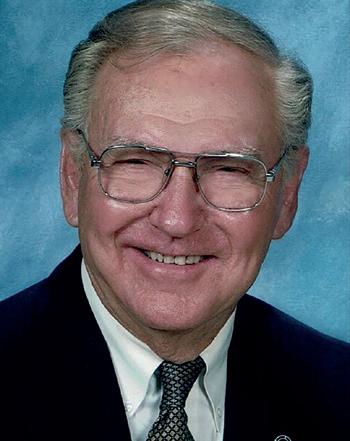
Don A. Mauzy ’73, of Little Elm, TX, and formerly of Gaithersburg, MD, died May 31, 2021. Don was a com bat-wounded Vietnam Veteran who at tended Shepherd after his service in the U.S. Army. Don was a McMurran Scholar at Shepherd and majored in business with a concentration in accounting. He later earned a Certified Public Accoun tant designation and worked for over 30 years for the U.S. Government, retiring as a deputy comptroller. Don believed his greatest accomplishment and pride in life was raising four loving children with his amazing wife, Mary (Welsh) Mauzy ’73, whom he met during their time as Shepherd students. In 2018, his youngest daughter, Emily, endowed the Don and Mary Mauzy Scholarship at Shepherd. The scholarship exemplifies the love and respect that Don’s family had for him. Don is survived by his devoted wife of over 47 years, Mary, and his four children, six grandchildren, and several cousins.
Imes ’18 and Steven Welti ’17 were engaged in July 2019 at Ferry Hill Plantation Visitors Center during sunset, while over looking the town that brought them together, after a trip to Nutters in Sharpsburg. Steve and Alyssa met in 2015 while working as resident assistants in Thacher Hall. They started dating in October 2015 and have been together ever since. Currently, Steve is getting his MAT at Shepherd University for art education, while Alyssa is getting her MFA at the University of Maryland. Alyssa and Steve will be married at Glen Ellen Farm in Ijamsville, MD on October 23, 2021.

Join us during Homecoming Weekend on October 23 to celebrate the 20212022 award recipients.
2021 Outstanding Alumna of the Year: Holly Morgan Frye ’09
2021 Finest Under 40 Inductees: Tyler Kambis ’17, Elizabeth Ricketts ’15, Joseph Hooks ’08
OCTOBER 21
6 p.m.
Outstanding Alum of the Year and Finest Under 40 Reception
Erma Ora Byrd Hall atrium
Honoring the 2021-22 Outstanding Alum of the Year and the new class of Finest Under 40.
By invitation only. Event information and RSVP capability is available online at www.shepherd.edu/suaa/ upcoming-events-2.
FRIDAY
The Shepherd University Alumni Association is now taking nominations for the 2022-2023 Outstanding Alumnus/a of the Year and the next class of Finest Under 40. Each year, nominations for these awards are voted on by the Alumni Association Board of Directors at its June meeting. Criteria and nomination forms can be found at https://www.shepherd.edu/suaa/alumnirecognition-programs

ALL NOMINATIONS ARE DUE BY JUNE 1, 2022
OCTOBER 22
7 a.m.
30th Annual Alumni Association Golf Tournament
The Club at Cress Creek
For more information on registration or sponsorships, please contact the Office of Alumni Affairs at alumni@ shepherd.edu or 304-876-5524 or visit www.shepherd.edu/suaa/ upcoming-events-2.
3 p.m.
Founder’s Day Celebration
The parade will begin at McMurran Hall and end at Potomac Place with a short
program and reception. Open to the campus and the public.
5 p.m. to 7 p.m. College of Business Reunion Dinner
Erma Ora Byrd Hall atrium
from the Shepherd University College of Business, including undergraduate and graduate students from any business program, are invited to return for a Homecoming welcome reception to include beer, wine, and a buffet dinner. Event information and RSVP capability is available online at www.shepherd.edu/suaa/ upcoming-events-2.
RAM FACT
In 1954, Shepherd sponsored its first European Study Tour, conducted by Dr. Ruth Scarborough, and successfully integrated the student body in the same year.
Be featured in our national recognition initiative: Rams Across America!

Alumni from all states have the opportunity to share their Shepherd experience and story, and be featured on the Shepherd University Alumni Association social media pages and Rams Across America map of the U.S. Submissions are currently needed for the Appalachian Highlands (West Virginia, Virginia, Kentucky, North Carolina, and Tennessee). Contact Hannah Brumbaugh with any questions or interest in the initiative via email at hbrumbau@shepherd.edu.
9 a.m.
Alumni Breakfast Lawn of McMurran Hall
Join us for a continental breakfast and grab the best seat for the homecoming parade. Breakfast is complimentary and is hosted by the Shepherd University Alumni Association and the Shepherd University Foundation. Open to the campus and the public.
10 a.m.
Homecoming Parade German Street
Watch as student organizations, President Mary J.C. Hendrix,
our 2021 Outstanding Alum, and other University and community groups process down German Street!
12 p.m.
Game Time: Rams vs. West Chester Ram Stadium
Directly following the game Homecoming Post-Game Party: Kick off to the Sesquicentennial Year Celebrations
Midway (between the Student Center and C-Lot)
members please note: only sustaining members will receive ONE (1) complimentary Homecoming football game ticket per member. Sustaining members can pick up their tickets at the Office of Alumni Affairs, October 18-21 from 9 a.m. to 3:30 p.m. or at the Alumni Breakfast on October 23 starting at 9 a.m.
The Alumni Association and Shepherd University Foundation welcome alumni, faculty, staff, students, and the community to celebrate with us after the game, win or lose, as we kick off a year-long celebration of 150 Years of Shepherd! Help us Honor the Past as we Transform the Future and enjoy music, socializing, and lawn games with fellow Shepherd Rams. Light refreshments. Must be 21 to drink!
Shepherd won the West Virginia Athletic Conference Football Championship in 1955. Members of that championship undefeated team still gather to celebrate their win!
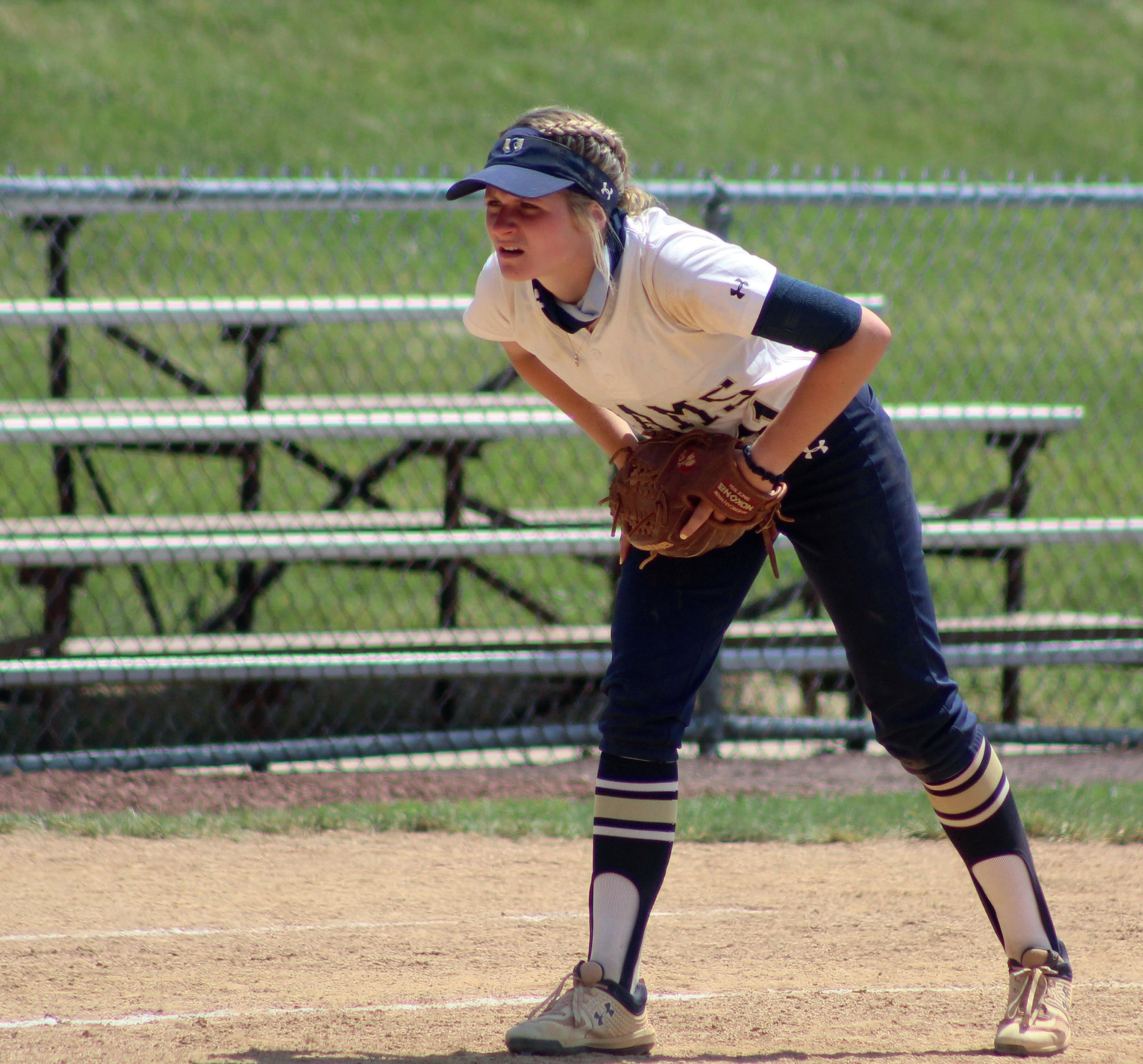
Nicole Purtell led the Rams in batting average (.433), hits (55), runs (50), walks (25), stolen bases (24), doubles (13), and triples (4). Her .529 on base percentage paced the team, while her .669 slugging percentage and 1.198 OPS ranked second on the team. She was PSAC East Athlete of the Week for April 19.

The Rams finished with a 22-14-1 overall mark with a 19-12-1 record in PSAC East action.
Four team members were named to the 2021 All-PSAC East Team. Se nior outfielder Jared Carr and senior reliever Adam Miller were first-team selections, while senior first baseman Dalton Stewart and graduate student outfielder Caleb Walls were named to the second-team.
Carr recorded a .375 batting average with 48 hits in 128 at-bats. He drove in a team-best 41 runs and scored 38. He added 12 dou bles and a team-best 11 home runs. He also tops the Rams with 25 stolen bases. He added a perfect 1.000 field ing percentage in 61 chanc es. He was named PSAC East Athlete of the Week for April 19.
Miller posted a 4-2 mark with one save in 10 appearances. He fanned 25 and walked only three in 19.2 innings. He added a 3.66 ERA with a 1.02 WHIP.
Stewart batted .311 with 33 hits in 106 at-bats. He drove in 34 runs and scored 26. He added nine doubles and seven home runs. He tied for the team lead in hit-by-pitch with seven. Stewart was 7-of-8 in stolen bases. He recorded a perfect 1.000 field ing percentage in 192 chances.
Walls batted .395 with a team-best 51 hits in 129 at-bats. He drove in 37 runs and scored a team-best 42. He added a team-best 23 doubles, two triples, and six home runs. His .744 slugging percent age, .484 on base percentage, and 1.228 OPS also led the team. Walls was 14-of15 in stolen bases. He was named PSAC East Athlete of the Week for March 29 and NCBWA Atlantic Region Hitter of the Week for March 30.
The softball team posted 26-14 overall mark with a 19-8 PSAC East re cord. The Rams made their sixth NCAA
II regional appearance (2007, 2010, 2017, 2018, 2019, 2021).
Six team members were named to the 2021 All-PSAC Team. Junior third baseman Nicole Purtell and sophomore designated player Cameron Davis were first-team selections, while senior sec ond baseman Leann Brown, senior outfielder Allison Baker, sophomore pitcher Katie Laing and freshman out fielder Isabella Forte were named to the second-team.
Davis had a .400 batting average with 48 hits in 120 at-bats. She had driven in a teambest 49 runs and scored 24. She added 11 doubles and a team-best 11 home runs. Her .767 slugging per centage and 92 total bases topped the team. Davis estab lished Shepherd single-season records with her 11 home runs and 49 runs batted in.
Brown had a .364 batting average with 43 hits in 118 at-bats. She drove in 23 runs and scored 27. She added seven doubles and was 10-of-10 in stolen bases.
Baker had a .333 batting av erage with 39 hits in 117 at-bats. She drove in 17 runs and scored 19. Baker added nine doubles and three triples on the year.
Laing led the Shepherd pitching staff in wins (10), appearances (19, tied with Sarah Lamper), innings pitched (87.1), games started (14), complete games (8), and shutouts (3). Her 3.53 ERA and 40 strikeouts were second on the team.
Forte had a .410 batting average with 34 hits in 83 at-bats. She drove in 15 runs and scored 20. She added five doubles, three triples, and a home run. Forte was 7-of-7 in stolen bases.

The women’s lacrosse team post ed a 4-6 overall mark with a 3-6 record in conference play. The Rams rallied from a six-goal deficit to record a 12-11 win over Lock Haven in the season finale.
Junior defender/midfielder Paige Alexander was named to the 2021 AllPSAC East Team. Alexander, a second-team selection, led the team with 35 draw con trols. See added eight ground balls and four caused turnovers. She recorded a season and career-high seven draw controls in a 15-14 win over Kutztown in the season opener.
The Rams finished third at the PSAC Championship. The squad also finished first at the Dr. Edwin B. Cottrell Invite and the Cecil Spadafora Invitational.
Graduate student Owen Elliott and sophomore Chris Neighbors were named to the PSAC Men’s Golf All-Conference
Team. Elliott earned first-team honors, while Neighbors was a second-team selection. Elliott, who gained All-Conference honors the fourth consecutive year, took medalist honors at PSAC Championship and Cecil Spadafora Invitational this year. Elliott added three more top-10 finishes on the season as he tied for fourth at the Dr. Edwin B. Cottrell Invite, tied for ninth at the Mercyhurst Spring Invitational, and tied for 10th at the NCAA East/Atlantic Regionals. Neighbors won medalist honors at the Dr. Edwin B. Cottrell Invite to help Shepherd gain the team title. His third-place finish at the Cecil Spadafora Invitational also aided the Rams in earning the team title. Neighbors was named PSAC Men’s Golf Athlete of the Week for April 7.
In its inaugural season, the women’s golf team finished 10th in a 12-team field at the PSAC Championship. The Rams de buted with a sixth place finish at the Barton College Intercollegiate.
The men’s tennis team recorded an 0-7 overall mark with an 0-5 record in conference play.
The women’s tennis team posted an 0-3 overall and conference mark.
Junior third baseman Nicole Pur tell and sophomore designated player Cameron Davis of the softball team gar nered All-American honors. Purtell gained second-team National Fastpitch Coaches Association (NFCA) honors and honorable mention D2CCA accolades, while Davis was a third-team D2CCA All-American selection.
Senior outfielder Jared Carr of the baseball team was named to the 2021 National Collegiate Baseball Writers Association (NCBWA) All-American Team, earning honor able mention accolades. An NCBWA honorable mention All-American choice in 2019, Carr joins Nathan Minnich (2011, 2012), Brenton Doyle (2018, 2019), and Justin Smith (2018, 2019) as Shepherd baseball players who have garnered All-American honors in more than one season.
Head softball coach Marissa Leslie (below) reached the 100-win mark for her career when the Rams swept Millersville at Sara Cree Field on March 11.


Sophomore pitcher Tanner Dixon of the baseball team and sophomore pitcher Katie Laing of the softball team were named PSAC Champion Scholars.
Dixon and Laing are the first cham pion scholars for Shepherd in baseball and softball. Dixon boasts a 4.0 GPA while ma joring in recreation/leisure studies. Laing boasts a 4.0 GPA as a secondary educa tion major.

The PSAC Champion Scholar Awards are modeled after the NCAA’s Elite 90 award and honor the student-ath lete with the top grade-point average who is competing at the site of each of the PSAC’s 23 team championship finals. The selection criteria for the Champion Scholar Awards are identical to that of the NCAA Elite 90 awards.

If you’ve been to a Shepherd University football game at Ram Stadium in recent years, you may have noticed a blue bicycle in the south end zone by the Boone Fieldhouse. Adorned with a Shepherd College pennant, the blue “bike” – more accurately a tricycle – belonged to Shepherd superfan Charlie Kave.


Charlie’s association with Shepherd football dated back to 1946. No one celebrated a Shepherd victory more than Charlie, and no one suffered a loss as hard as he did. He was a frequent visitor to practices and even once suffered a broken leg when he got a little too close to the action.
Charlie also traveled to virtually all Shepherd games except when sidelined by health issues. In a story that has become the stuff of legends, he was once smuggled by the players into the luggage compartment of the team bus during a trip to Cleveland, resulting in a quick trip to a nearby hospital. With true Ram spirit, he returned in time to watch the second half of the game.
Shepherd lost its “Number One Fan” when Charlie passed away on October 5, 2002. That same year he was honored by the Shepherd Athletic Hall of Fame with a portrait that now hangs in the Butcher Center lobby, and the Shepherd football team wore “CK” stickers on their helmets to honor his memory.
Charlie Kave will forever hold a special place in the folklore of Shepherd football.

In a 2020 interview called “Driving by Her Own Headlights,” Marie Manilla said about her writing, “My work explores the human condition, in all our frailties and glories.” A writer who has always been acutely aware of her West Virginia roots while at the same time feeling the occa sional urge to escape them, Manilla has experienced both the burden and the boon of being Appalachian, and she captures these feeling in her award-winning books and short stories.

In partnership with the Shepherd University Foundation, the Center for Appalachian Studies and Communities at Shepherd University will bring the 2021 Appalachian Heritage Writer-in-Residence, Marie Manilla, to Shepherd’s campus September 28-October 1 for an extraordinary series of programs celebrating her work and our Appalachian heritage. Manilla will also serve throughout 2021 as the One Book One West Virginia author, with her award-winning novel, “The Patron Saint of Ugly,” being se lected as the 2021 statewide common reading selection. The West Virginia Center for the Book and Center for Appalachian Studies and Communities worked with Manilla to create a host of tools and resources so that book clubs and teachers across the state may discuss her work.
Marie Manilla grew up in Huntington, WV, and like many young people, yearned to see the world beyond Appalachia. After college, she moved to Texas for what she thought was another culture and life, working sev en years as a graphic designer. She found
that even half a continent away from West Virginia’s country roads, people were more alike than different. After getting her M.F.A. and returning to West Virginia, she began to write seriously, initially considering herself a short story writer and publishing in a range of journals exploring what she calls “those pivotal moments in characters’ lives that forever change them for better or worse.”
Like author Silas House, characterization is Manilla’s true forte, though her writing also possesses wonderful joie de vivre and energy that allows her to entertain even as she tackles the thorniest of issues and profoundest of themes. Manilla is a product of the prestigious Iowa Writers’ Workshop and has evinced a prodigious talent over the years. Her short story collection, “Still Life with Plums”, was a finalist for both the Weath erford Award and Foreword INDIES Book of the Year.
and allowed Manilla to explore the hero’s journey, raising the level of the story to an archetype inspired by Joseph Campbell.
The extraordinary success and rave re views of Manilla’s third book, “The Patron Saint of Ugly,”established her as a literary force to be reckoned with and won the Weatherford Award in 2014. Exploring Manilla’s own Italian roots, the novel has been called a “blend of magical realism, Southern Gothic, and Sicilian malocchio.” It investigates ideas about prejudice, “oth ering,” and the “beauty myth,” which serves as another kind of stereotype.
Shepherd University is home to the Appalachian Writer-in-Residence program and publishes “The Anthology of Appalachian Writers,” which currently has 13 volumes.
Manilla later published “Shrap nel” (2012), which takes us into the consciousness of a transplanted old Texan, Bing Butler, whom Manil la somehow endears to her readers in spite of his narrow and intolerant attitudes. Bing discovers upon moving from Texas to West Virginia both the importance of family and the necessity of tempering his judgement of anyone he finds different from himself. “Shrapnel” won the Fred Bonnie Award for Best First Novel
The fall 2021 events surrounding writ er-in-residence Marie Manilla will help kick off Shepherd’s 150th anniversary celebration, signaling an illus trious list of Appalachian Heritage writers honored at Shepherd over the past 20 years, includ ing Denise Giardina, Henry Louis Gates Jr., Charles Frazier, Nikki Giovanni, and Dorothy Allison. Manilla worked throughout the spring with the center’s staff to create a scholarly website for teachers and book clubs. Her duties include judging the West Virginia Fiction Competition, and during her residency she will visit libraries, schools, and book clubs.
For information about the full range of events, programs, and videos available, visit https://www.shepherd.edu/ahwirweb/manilla/.

Shepherd University’s sesquicentennial celebration will officially kick off during Homecoming weekend. Across campus, academic departments and affinity groups are planning commemorative events in recognition of this important milestone.
23, 2021
Join alumni and friends on the Shepherd University Midway immediately following the Homecoming game to launch a year-long celebration of 150 Years of Shepherd! Enjoy music, socializing, lawn games, and light refreshments with fellow Shepherd Rams. Sponsored by the Shepherd University Alumni Association and Shepherd University Foundation.
SAVE THE DATES!
October 10, 2021, 1-4 p.m., McMurran Hall
Women for Shepherd host a Town and Gown Historic Walking Tour
October 12, 2021, 5 p.m., Scarborough Library
The 2021-22 Scarborough Art and Lecture Series will begin with the unveiling of a collection of books by George Eliot and a reading from Eliot’s masterpiece “Middlemarch.”
May 15, 2022, 2-4 p.m., Tabler Farm
Women for Shepherd Open House at Tabler Farm, led by Dr. Jeff Groff and Dr. Peter Vila
May 5, 2022
The 66th Annual Emeritus Club luncheon and ceremony, honoring the Class of 1972
Visit www.shepherd.edu/150th for a developing calendar of sesquicentennial events and join us in Honoring the Past as we Transform the Future!

